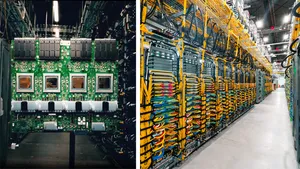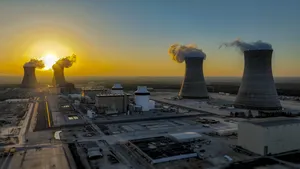Helping fashion brands make more sustainable decisions
The fashion industry is one of the largest contributors to the global climate and ecological crisis — accounting for up to 8% of global greenhouse gas emissions. Much of this impact occurs at the raw materials stage of the supply chain, like when cotton is farmed or trees are cut down to create viscose. But when brands source these materials, they often have little to no visibility on the environmental impact of them.
In 2019, we set out to create a tool that would give companies the data they need to make more responsible sourcing decisions. Today we’re announcing the first version of the Global Fibre Impact Explorer (GFIE), and we’re inviting other brands to get involved. The tool, which is built on Google Earth Engine and uses Google Cloud computing, assesses the environmental risk of different fibers across regions as it relates to environmental factors such as air pollution, biodiversity, climate and greenhouse gasses, forestry and water use.
With this tool, brands will easily be able to identify environmental risks across more than 20 fiber types — including natural, cellulosic and synthetics materials.The tool will also provide brands with recommendations for targeted and regionally specific risk reduction activities including opportunities to work with farmers, producers and communities, such as investing in regenerative agriculture practices
The GFIE dashboard where brands can upload their fiber portfolio data and get recommendations to reduce risk across key environmental categories.

Spooling it all together: Working with fashion brands and conservation experts
We worked with Stella McCartney, a luxury fashion brand and leader in sustainability, to understand the industry's needs and to test the platform. Using the tool alongside their existing sustainability efforts, Stella McCartney’s team was able to identify cotton sources in Turkey that were facing increased water and climate risks. This affirms the need for investing in local farming communities that focus on regenerative practices, such as water management and soil regeneration. Other brands and retailers — including Adidas, Allbirds, H&M Group and VF Corporation — have helped test and refine the tool to make sure it can be useful to everyone in the industry. And an external council of global experts have reviewed the GFIE methodology and data.
The GFIE was born out of a partnership between Google and the WWF, and is built to complement existing tools focused on industry impact and risk analysis. With the initial development phase complete, Google and WWF are now transitioning GFIE to Textile Exchange, a global non-profit focused on positively impacting climate through accelerating the use of preferred fibers across the global textile industry. As the official host of the GFIE, Textile Exchange will continue the development of the tool, onboard new brands and work towards an industry launch in 2022.
If you’re a part of a fashion brand or industry group and want access to this tool, please register your interest at globalfibreimpact.com.






